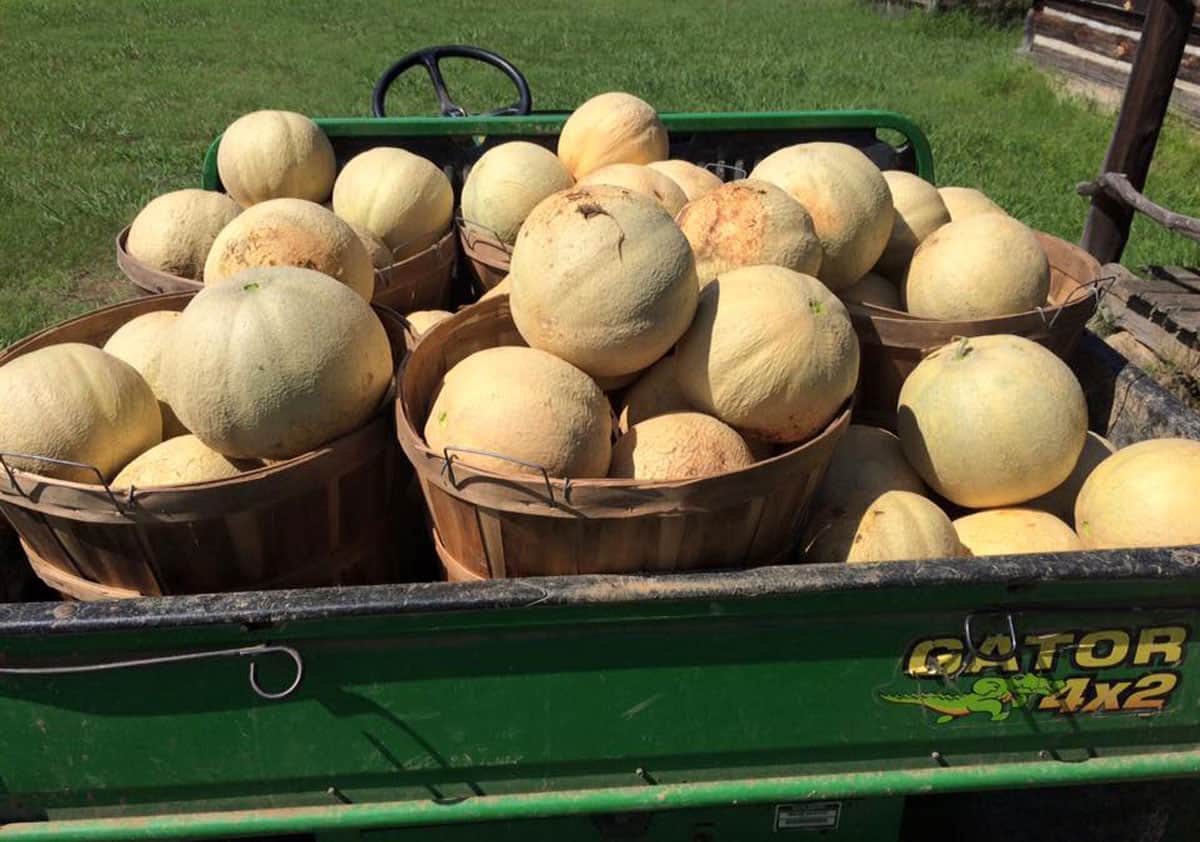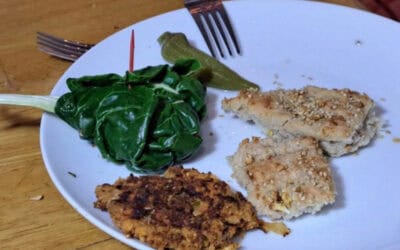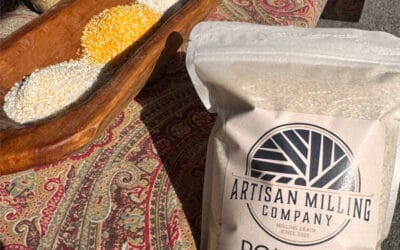His advice is to go with your senses of sight, sound and smell– look it over, sniff it, and give it a tap for either a watermelon or cantaloupe. No matter the fruit, he highly recommends not squeezing them because you will generate bruising and damage the fruit for the next person or for storage. I have a farmstead friend who has a cute saying of, “Don’t squeeze the fruit as you’ll hurt its peelings.”
We’ll first go over the cantaloupe.
Visibly, it should have a nice overall even gold beige color, not green. The stem should have belly button/hole and should not have any vine attached. If part of the stem is left, with a green background, it is far from ripe.
Although you might feel silly smelling your fruit in public, don’t as you are the smartest person in making the freshest purchases. Your cantaloupe should have a sweet smell, especially at the blossom. The blossom is the opposite end from the stem side.
Visiting family at the beach during the Fourth, I took a Brazilian friend to their farmers market for the first time. I gave her a bunch of advice of what to look for and he told me of all the fresh fruit in Brazil then stunned me with her simple statement of, “Fruit is all about the smell.” How true she is. If you don’t smell anything then it isn’t ripe.
But maybe you don’t want it to be ripe for a few days as you have other fruits and foods to consume. A cantaloupe will not continue to ripen after it has been picked. You can however make it soften and become juicer. If you place a cantaloupe into a paper bag and close it your cantaloupe will naturally give off Ethylene which helps to soften the fruit. A lot of people think this is ripening it but in actuality it is just soften it so that it is juicier.
Apples, bananas, apricots, and tomatoes, among others, are climacteric fruits which means they continue to ripen after they’re picked. Cantaloupes and other non-climacteric fruits (cherries, grapes and citrus) don’t ripen once they’re severed from the plant so all of these fruits should be stored in the fridge to keep them from going bad. Don’t let your locally sourced, perfectly picked produce go to waste.
Similar applications apply to choosing a ripe watermelon. It should have no vine, feel heavy and slightly rigged along the stripes. The ground spot (where the fruit rested) needs to be a creamy yellow (not white) and should be a little bumpy.
One of the techniques I’ve embraced with finding a good watermelon is listening to it. If it sounds hollow, then it is most likely either under-ripe or overripe. I compare the sound to finding a stud behind the wall versus not. You want a watermelon with a hollow (no stud) sound. If it sounds tight with no depth (stud) then its not ripe. Again, try not to beat on the sweet fruit as it can affect the shelf life.
As Jones Farm sadly lost the fruit from 850 peach trees this year, he was ready with a tasty back up plan that includes green and red tomatoes, basil, sweet and hot peppers, eggplant, cantaloupe, watermelon, beans, corn, pumpkins, mums, mushrooms, teas, jellies, and more. Stop by his booth and feel confident sniffing a full serving of your fruits and vegetables.





0 Comments